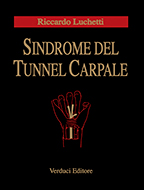Trigger finger
Stenosing tenosynovitis, known as “trigger finger”, involves the pulleys and tendons in the hand.
In the finger, the pulleys are a series of rings that form a tunnel through which the tendons must pass.These pulleys hold the tendons close against the bone.
Trigger finger occurs when the pulley at the base of the finger becomes too thick and constricting around the tendon, making difficult for the tendon to move through the pulley. Sometimes the tendon develops a nodule (knot) or swelling. Because of this patient may feel pain in the finger or thumb.
Sometimes the finger becomes stuck or locked, and is hard to straighten or bend. Causes Pathology is not always clear. Patient may have rheumatoid arthritis, gout, and diabetes. Local trauma of the finger may be a factor on occasion. Signs and symptoms Trigger finger may start with discomfort felt at the base of the finger or thumb in the palm. This area is often tender to local pressure. A nodule may sometimes be found in this area.
Treatment
A splint or taking an oral anti-inflammatory medication may sometimes help. Steroid injection into the area around the tendon and pulley is often effective. If conservative treatment do not relieve the symptoms, surgery may be recommended.
The goal of surgery is to open the pulley at the base of the finger so that the tendon can glide more freely. Active motion of the finger generally begins immediately after surgery. Normal use of the hand start after the surgery. Some patients may feel tenderness, discomfort, and swelling about the area of their surgery longer than others. Occasionally, hand therapy is required.
In the finger, the pulleys are a series of rings that form a tunnel through which the tendons must pass.These pulleys hold the tendons close against the bone.
Trigger finger occurs when the pulley at the base of the finger becomes too thick and constricting around the tendon, making difficult for the tendon to move through the pulley. Sometimes the tendon develops a nodule (knot) or swelling. Because of this patient may feel pain in the finger or thumb.
Sometimes the finger becomes stuck or locked, and is hard to straighten or bend. Causes Pathology is not always clear. Patient may have rheumatoid arthritis, gout, and diabetes. Local trauma of the finger may be a factor on occasion. Signs and symptoms Trigger finger may start with discomfort felt at the base of the finger or thumb in the palm. This area is often tender to local pressure. A nodule may sometimes be found in this area.
Treatment
A splint or taking an oral anti-inflammatory medication may sometimes help. Steroid injection into the area around the tendon and pulley is often effective. If conservative treatment do not relieve the symptoms, surgery may be recommended.
The goal of surgery is to open the pulley at the base of the finger so that the tendon can glide more freely. Active motion of the finger generally begins immediately after surgery. Normal use of the hand start after the surgery. Some patients may feel tenderness, discomfort, and swelling about the area of their surgery longer than others. Occasionally, hand therapy is required.
- Il pollice dello sciatore
- Rizoartrosi
- Cisti del polso
- DeQuervain’s tendinitis
- Dupuytren’s disease
- Cubital Tunnel Syndrome
- Lo scafoide carpale
- Cisti della IFP
- Trigger finger
- Carpal Tunnel Syndrome
- Cisti della puleggia
- Epicondilite o gomito del tennista
Luchetti MD

SICM PresidentItalian Society for Surgery of the Hand
ISSPORTH PresidentInternational Society for Sport Traumatology of the Hand






